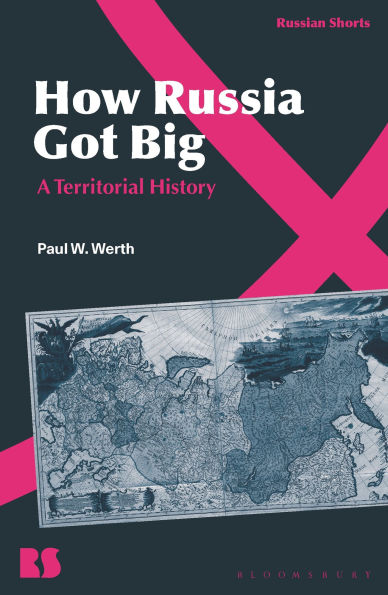How Russia Got Big: A Territorial History
How Russia Got Big accounts for Russia's changing physical scope over some seven centuries.
Even people who know little about Russia know that it is big. This concise book tells the story of how it became so. Beginning with the small principality of Moscow in the early 14th century, Paul W. Werth recounts the construction of the world's largest country-from Muscovy and the Russian Empire through the USSR to today's Russian Federation-as well as its territorial retrenchment and even collapse on several occasions. Integrating geography, diplomacy, war, and imperial politics, the book ranges across three continents and recounts diverse interactions with neighboring polities and peoples. Werth likewise contemplates different ways of conceptualizing territorial possession and related understandings of sovereignty, authority, and belonging. The result, illustrated with 29 original maps, is a grand story from a bird's-eye view that reveals deeper rhythms to Russia's territorial history involving alternations of enlargement and crisis-ones that continue in our own day.
1146536987
Even people who know little about Russia know that it is big. This concise book tells the story of how it became so. Beginning with the small principality of Moscow in the early 14th century, Paul W. Werth recounts the construction of the world's largest country-from Muscovy and the Russian Empire through the USSR to today's Russian Federation-as well as its territorial retrenchment and even collapse on several occasions. Integrating geography, diplomacy, war, and imperial politics, the book ranges across three continents and recounts diverse interactions with neighboring polities and peoples. Werth likewise contemplates different ways of conceptualizing territorial possession and related understandings of sovereignty, authority, and belonging. The result, illustrated with 29 original maps, is a grand story from a bird's-eye view that reveals deeper rhythms to Russia's territorial history involving alternations of enlargement and crisis-ones that continue in our own day.
How Russia Got Big: A Territorial History
How Russia Got Big accounts for Russia's changing physical scope over some seven centuries.
Even people who know little about Russia know that it is big. This concise book tells the story of how it became so. Beginning with the small principality of Moscow in the early 14th century, Paul W. Werth recounts the construction of the world's largest country-from Muscovy and the Russian Empire through the USSR to today's Russian Federation-as well as its territorial retrenchment and even collapse on several occasions. Integrating geography, diplomacy, war, and imperial politics, the book ranges across three continents and recounts diverse interactions with neighboring polities and peoples. Werth likewise contemplates different ways of conceptualizing territorial possession and related understandings of sovereignty, authority, and belonging. The result, illustrated with 29 original maps, is a grand story from a bird's-eye view that reveals deeper rhythms to Russia's territorial history involving alternations of enlargement and crisis-ones that continue in our own day.
Even people who know little about Russia know that it is big. This concise book tells the story of how it became so. Beginning with the small principality of Moscow in the early 14th century, Paul W. Werth recounts the construction of the world's largest country-from Muscovy and the Russian Empire through the USSR to today's Russian Federation-as well as its territorial retrenchment and even collapse on several occasions. Integrating geography, diplomacy, war, and imperial politics, the book ranges across three continents and recounts diverse interactions with neighboring polities and peoples. Werth likewise contemplates different ways of conceptualizing territorial possession and related understandings of sovereignty, authority, and belonging. The result, illustrated with 29 original maps, is a grand story from a bird's-eye view that reveals deeper rhythms to Russia's territorial history involving alternations of enlargement and crisis-ones that continue in our own day.
61.0
Pre Order
5
1

How Russia Got Big: A Territorial History
184
How Russia Got Big: A Territorial History
184
61.0
Pre Order

Product Details
| ISBN-13: | 9781350284012 |
|---|---|
| Publisher: | Bloomsbury Academic |
| Publication date: | 09/18/2025 |
| Series: | Russian Shorts |
| Pages: | 184 |
| Product dimensions: | 5.08(w) x 7.79(h) x 1.00(d) |
About the Author
From the B&N Reads Blog
